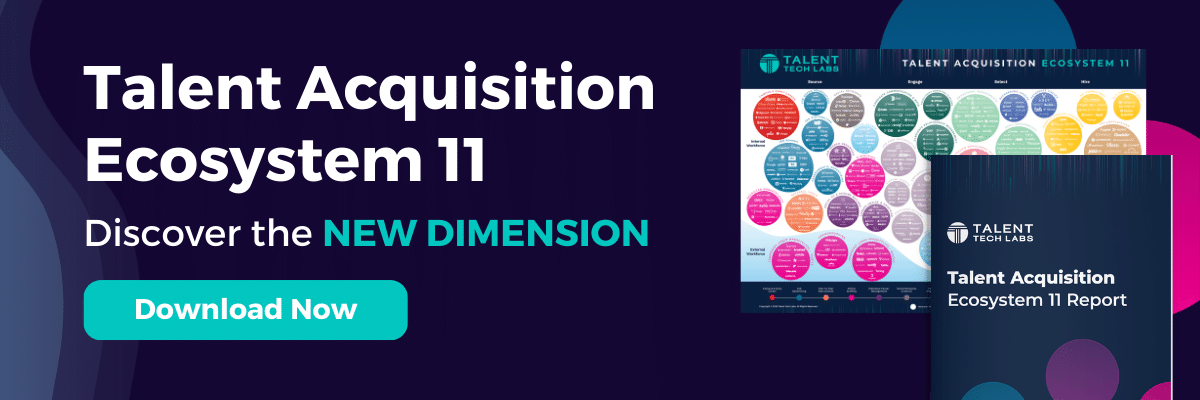Matching Systems are beginning to face increased competition from TA technologies outside of matching. Some of the strongest and most prevalent examples we are seeing in this trend are Candidate Relationship Management (CRM) systems that have built matching capabilities natively. CRM technology platforms are used for managing and engaging with passive talent up to the point at which candidates apply for a job. CRM providers such as Eightfold, Beamery, and Phenom each offer proprietary matching capabilities as part of their platform offering. But what do these native capabilities look like, and how do they compare with purpose-built matching systems?
Talent Tech Labs (TTL) just released an Ecosystem Insights Reports on Candidate Relationship Management and Matching Systems, a deep and comprehensive guide that elaborates on the growing prevalence of built-in matching and parsing as well as in-depth coverage of these tools. In this post, we have shared some highlights of today’s CRM and matching landscape. If you are interested in accessing the full report, contact us about the benefits of a TTL membership.
CRMs are Applying AI/ML Matching, Scoring and Demand Prediction
Many of the leading CRM providers have tools for predictive matching of candidates with jobs or other candidates, while the rest are working towards adding these functionalities. Some companies are also looking at predicting hiring needs by analyzing trends in vacancy creation.
Matching Jobs:
The intention is that as a job gets created in the CRM, the tool will at a minimum identify keywords or skills and use these to query the database to present potential matches to the user. This technology is still evolving to include semantic search and some machine learning algorithms. Vendors are continuing to solve for the lack of detail and consistent structure in many job descriptions, while some (such as Eightfold) have AI-based matching as the core “feature” upon which the rest of the platform is built.
Matching Candidates:
Finding similar contacts is much closer to being widely available. When a sourcer moves a contact into a talent pool, the CRM would compare the structured data held against the contact and present the user with a number of potential matches, allowing contacts that would not have been surfaced using a traditional Boolean search to be included. Eightfold differentiates itself by using AI-first matching to search internal databases.
Predicting Demand:
The ability to preemptively create talent pools to pipeline for a job that the user will need to recruit for in the near future is the furthest away of these AI trends. There are fewer data points for analysis, and many factors play into tenure and hiring needs. However, in the perfect future state, a CRM would know when a job is likely to be created, pre-create it, and populate a talent pool on the organization’s behalf.
As with all AI/ML development, the common thread is access to more data. The trend we’re seeing is for CRM providers to look to integrate with more upstream systems to allow for better matching.
CRM providers are integrating with more upstream systems to access more data for superior matching using artificial intelligence and machine learning. Click To Tweet
Matching Systems are Developing CRM Capabilities
While CRM providers are building matching tools into their platforms, we’re also seeing this development from the other side. Historically, Matching Systems were typically designed to sit on top of existing ATS or CRM, with the UX often abstracted. Thus, these solutions were extremely low-touch for recruiters and hiring managers. In fact, some of these stakeholders may even be completely unaware that there’s a third-party matching engine behind the ATS or CRM.
The context is changing rapidly, however, with the popularity of Social Search tools – a class of Matching System products that find, aggregate, and interpret data that are outside the traditional recruiting sphere. Recruiters can use this to find passive candidates by skill set, company, region, job title, or demographics, and can initiate outreach directly from the platform or export to a hiring system. A common feature of category market leaders such as Seekout and HireEZ is the ability to send direct outreach to candidates from within the platform, as well as automate outreach email campaigns to target groups. Thus, some Social Search tools can function as a lightweight CRM.
TTL’s Thoughts on CRM + Matching:
If a hiring organization is in the market for a CRM, it makes sense to look into the native matching capabilities available, but we don’t recommend acquiring a CRM in lieu of a primary standalone matching system. On the other hand, there are examples of CRM platform providers, such as Recruitment Smart, that leverage their ‘core’ matching technology as a separately-sold product or custom configuration. As CRMs tend to require a larger investment than a standalone matching solution, there are clear advantages in combining these functionalities. We currently consider the market leaders in matching (e.g. Seekout, HiredScore) to be the best in class, but AI-forward CRMs, like Eightfold and Beamery, are catching up quickly. Overall, the ROI for either type of solution greatly depends on the individual use case and the key business problems you need to address.
If your organization is thinking about adding a CRM or other TA platforms that might also have its own embedded matching system, we can help you evaluate, select, and optimize the best solution for your needs.
Talent Tech Labs is actively monitoring the ever evolving CRM market and the convergence with Matching Systems is not the only trend we are observing. We recently released an update exploring the latest trends with CRM with Applicant Tracking Systems (ATS) providers. Read the update to gain more insights.
For guidance on CRM systems or the broader scope of your talent tech strategy, reach out to us today!

